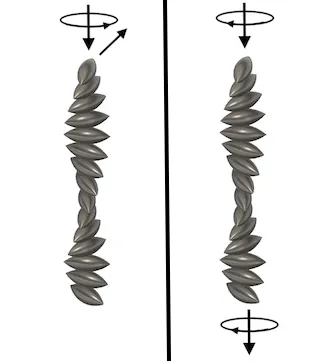Another Wavelength: Sawyer Miller

This month in Another Wavelength, we chat with 2nd year Ph.D. Student Sawyer Miller currently mentored by Stanley Pau.
Where are you from?
I grew up in Ruidoso, New Mexico, a small mountain town of about 8,000 people.
What brought you to study optics?
I completed my undergraduate studies at Fort Lewis College (FLC) in Durango, CO. While I was there, I took an optics course as it was the only elective that fit my schedule. I was pretty unaware of the entire subject until then. The class was much more difficult than I had anticipated, but it was the first class in college that I truly enjoyed. My advisor at the time recommended I apply for an REU position for the following summer. I applied to the one here at Optical Sciences, was accepted and completed the program. I’ve been hooked on optics ever since!
Who is your hero in science?
I do not necessarily have a hero in science, but am a fan of the discoveries, accomplishments, and inventions made. Jonas Salk’s discovery of the vaccine for polio and making it widely available was a great accomplishment for mankind. The men and women of NASA who worked incredibly hard to send men to the moon accomplished another great feat. The invention of the transistor and application onto an integrated circuit was very influential as well. I can’t imagine a life without microelectronics.
Describe your research in 20 words or fewer.
I am trying to improve the versatility and performance of polarization optical filters.

Describe your research in 200 words or fewer.
I work on a variety of polarization filters that utilize thin-film stacks of liquid crystals. Traditional polarization optics utilizes birefringent crystals which are usually very expensive. Stacks of thin-film liquid crystals are much less expensive and allow for polarizers transmitting states ranging from linear to circular and every elliptical polarization in between. These stacks can also be fabricated to have localized transmission axes, allowing for arrays of micro-polarizers each transmitting a different state all while located on the same substrate.
With this technology, many different filters can be created. A Bayer mosaic like filter can be created, but instead of color filters over a pixel a different polarizer is placed over a pixel. Polarization information can then be gathered over an entire image.
The great thing about polarization is the information that can be contained within the polarization states. It’s an underutilized technique and with more affordable filters, could be a great addition to communication and autonomous systems.
Name three neat facts about you.
- I originally attended FLC to pursue professional cycling. I had to put the cycling career on the back-burner after one too many injuries. I still try to ride almost every day.
- I love music, especially punk rock.
- I built and launched competitive model rockets until I was 17.
